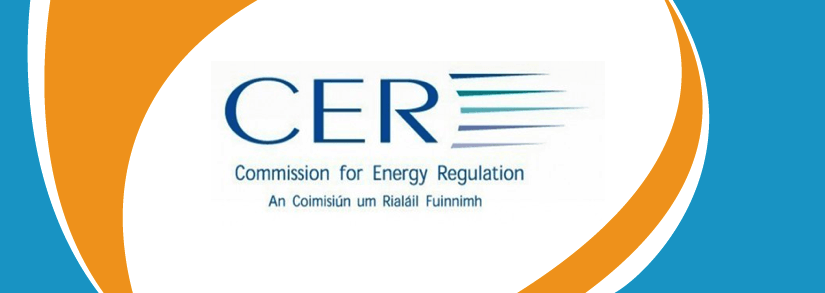CER is now CRU: Rebranding, Contact and Complaints

The Commission for Energy Regulation (CER) was Ireland’s energy and water regulator. Read on to learn about their development, impact and why they rebranded, as well as how to contact them and make a complaint.
What Was the CER?

The Commission for Energy Regulation (CER) was an independent body that was responsible for regulating Ireland’s electricity, gas and water sectors. It was originally established under the Electricity Regulation Act 1999 as an exclusive economic regulator for Ireland’s electricity market.
Over the coming years, the CER gained more regulatory authority. Let’s have a look at this progression in the timeline below.
- 1999 — The Electricity Regulation Act 1999 established the CER as Ireland’s independent electricity regulator.
- 2002 — The Gas Act 2002 grants the CER regulatory authority over the natural gas market.
- 2006 — The Energy Act 2006 gives the CER powers concerning the regulation of gas and electricity safety.
- 2007 — The Single Electricity Market (SEM) goes live.
- 2010 — The CER’s safety functions are expanded to include extraction and exploration activities.
- 2012 — Its functions are further expanded to include liquefied petroleum gas (LPG) installations.
- 2014 — The CER becomes Ireland’s water and wastewater regulator.
- 2017 — The CER rebrands as the Commission for Regulation of Utilities (CRU).
The ultimate rebranding of the CER was done to reflect its expansion into water and wastewater regulation, rather than just energy.
During its final years as the market regulator, the CER had various economic, customer protection and safety responsibilities, such as the following:
- Regulating the Irish electricity and natural gas sectors.
- Ensuring that energy prices were fair and reasonable.
- Maintaining a secure supply of gas and electricity.
- Promoting competition in the generation and supply of electricity, as well as in the supply of natural gas.
- Resolving complaints that customers may have with energy suppliers.
- Regulating the safety of upstream petroleum extraction and exploration activities, such as offshore gas and oil.
- Ensuring clean water was supplied and that wastewater was efficiently treated.
- Making sure vulnerable customer get the help they need during power outages.
Did the CER Change to the CRU?
The Energy Act 2016 required the CER to alter its name to the Commission for Regulation of Utilities (or An Coimisiún um Rialáil Fóntais in Irish) to embody all aspects of its extended sphere across the energy and water sectors. With regards to the rebranding, CRU Chairperson Dr. Paul McGowan stated, “The driving principle for the CRU will continue to be the consumer and to ensure that the public interest is protected across energy, energy safety and water.”
Although the name has changed, the CRU’s objectives remain as they were prior to the change over.
What Was the CER and Electricity Interconnection?

As the main energy regulator, the CER played a major role in developing Ireland’s electricity grid. One important achievement was their work on interconnecting Ireland’s electricity generation resources to that of other countries in Europe. By connecting Ireland’s electricity grid with neighbouring countries, the CER guaranteed security for Ireland’s energy supply while also creating more competition, which was a key goal in deregulating Ireland’s energy market. It is different from ESB networks who runs the energy infrastructure.
Let’s have a look at these different interconnectors, their importance, and the role the CER played in their development.
What Was the CER and the North-South Interconnector?
There is currently one large North-South interconnector, the Louth the Tandragee interconnector, that joins the electricity grids of Ireland and Northern Ireland. It consists of a 275 kV double-circuit overhead line. In addition to this major interconnector, there are also two small North-South Interconnectors: the Strabane to Letterkenny and Enniskillen to Corraclassy. These links allow for EirGrid and the System Operator for Northern Ireland (SONI) to provide shared, short-term energy assistance.
The CER stated that this new North-South interconnector will yield various long and short-term benefits to electricity consumers in Ireland and Northern Ireland, such as the following:
- An increased security of electricity supply
- A reduction in the wholesale price of electricity
The CER said it believed that any delay to this project is against the interests of Irish electricity consumers.
What Was the CER and the East–West Interconnector?
The CER spearheaded the development of the East–West Interconnector, which is a 500 MW high-voltage direct current power cable that connects the Irish and British electricity grids. In March 2004, the CER commissioned a KPMG-led consortium to investigate and provide technical, financial and commercial advice regarding a new electricity interconnection between Ireland and Wales.
The interconnector is 262 km long, with 186 km below the sea. It runs from County Meath to north Wales and can transport electricity to supply around 350,000 homes.
Benefits of the East-West Interconnector include the following:
- Providing a more secure electricity supply in both Ireland and Great Britain
- Promoting competition in the electricity sector
- Pressure to reduce electricity prices
- Advancing growth in renewable energy
Another cable, the Moyle Interconnector, already connects Northern Ireland and Britain. It runs from Islandmagee to Auchencrosh, Scotland and also has capacity of 500 MW. There is also the Celtic Interconnector.
How Do I Make a Complaint to the CER?
In the event that you need to make a complaint to the CER about your energy supplier, network operator or about Irish Water, you will now need to contact the CRU to file the complaint. You can only log a complaint with the regulator if you have already completed the complaint handling process with the concerned party.
The complaint process is the same as it was with the CER. It consists of the following six steps:
- Submit the Form
Fill out and submit the CRU complaint form on the regulator’s website. You can also the form via email to the Customer Care Team at [email protected]. All complaints must be submitted in writing. You cannot call the Customer Care Team to make your complaint. - Confirmation
The regulator will confirm that you have completed the complaint handling process with either your energy supplier, your network operator or Irish Water. It will then ask for a report on the complaint. - Copy of Complaint
You will receive a copy of the complaint report. You should then give any comments you have about the complaint. - Investigation
The regulator will investigate your complaint. If it needs any additional information, it will contact you or the party concerned (either your supplier, network operator or Irish Water). - Review
Once the regulator has investigated your complaint and reviewed all of the information provided, it will issue a proposed decision to both you and your supplier/network operator. All parties involved have the opportunity to comment on the outcome. - Decision
The regulator will review all comments and then make a final decision. The decision may include compensation or instructions on how the supplier/network operator or Irish Water must resolve the issue.
The regulator will aim to resolve your issue within 90 days from when you first submit the complaint.
What about water in Ireland? The CER (nor does the CRU) handle complaints concerning water quality or pollution. If you have a problem with your drinking water, you should contact Irish Water directly. If the problem persists, contact the Environmental Protection Agency.
Can I Still Contact the CER?
If you need to get in touch with the CER , you will now need to contact the CRU. You’ll find the different contact details, depending on your query, in the table below.
| Department | Phone number | Email address |
|---|---|---|
| General | 1 4000 800 | [email protected] |
| Customer Care | 1 890 404 404 | [email protected] |
| Media queries | 0 860 081 470 | [email protected] |
Customers with general queries or those trying to contact Customer Care can also send a letter to the regulator. If you prefer to contact the regulator via writing, send your query to the following relevant address:
For general queries:
Commission for Regulation of Utilities (CRU)
The Grain House
The Exchange
Belgard Square North
Tallaght
Dublin 24, D24 PXW0
Ireland
For the Customer Care team:
Commission for Regulation of Utilities
P.O. Box 11934
Dublin 24
Ireland
Find out more about our offers from energy, broadband and waste collection providers!
